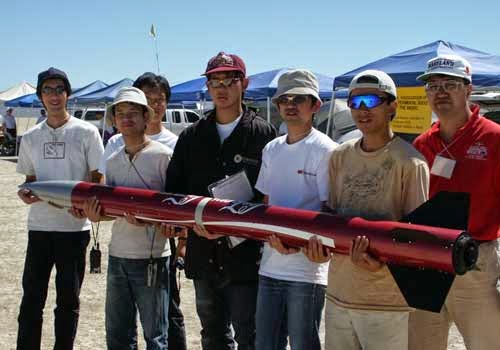As the Titech (Tokyo Institute of Technology) CanSat in 1999, the University of Tokyo planned and designed their own CanSat in 2001 also as a Japan-U.S. joint venture to make satellites for educational purpose. Their CanSats were designed to deploy a thin flexible membrane using centrifugal force. As it happened in previous editions, the satellites were launched in a rocket called AIRLISS (A Rocket Launch for International Student Satellite). Three different CanSats were built and launched at the Black Rock desert, in Nevada. Each one had a specific mission:
- CanSat#001 was a prototype of the orbital model of Gekkabijin (a nano satellite which was being designed at that moment by the laboratory of the University). Its missions included rotating CanSats using a reaction wheel, charging secondary batteries by solar cells, estimating attitude using a gyro and solar cells, performing communication and sending telemetry among other things.
- CanSat#002's main purpose was to test electronics and six sensors. Besides, its structure was made of a usual juice can to reduce its weight.
- CanSat#003 was equipped with a CCD camera and a high power transmitter which was able to send the taken pictures during the flight to the ground station.
There were some failures in parts such as the antenna, but as an educational project it was a success thanks to the learnt skills by the students.

No comments:
Post a Comment